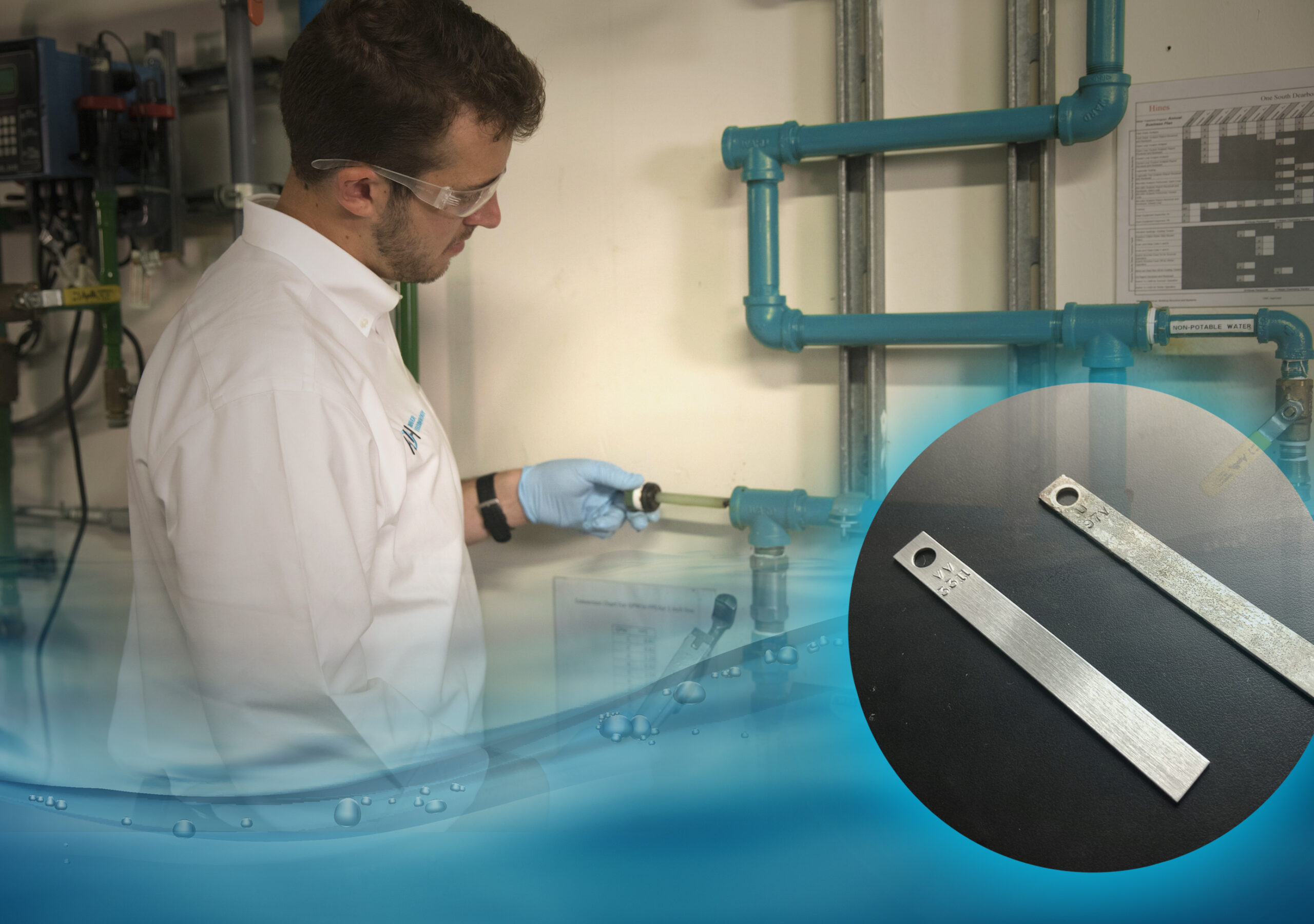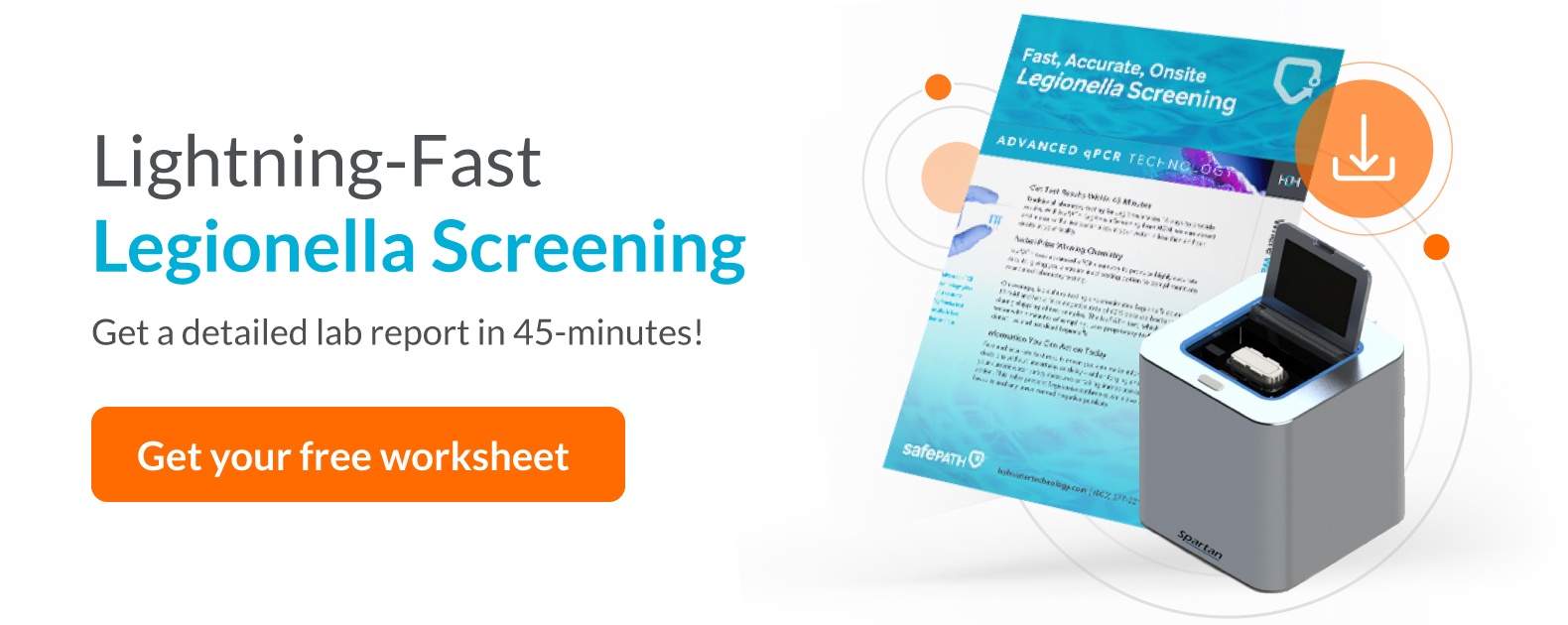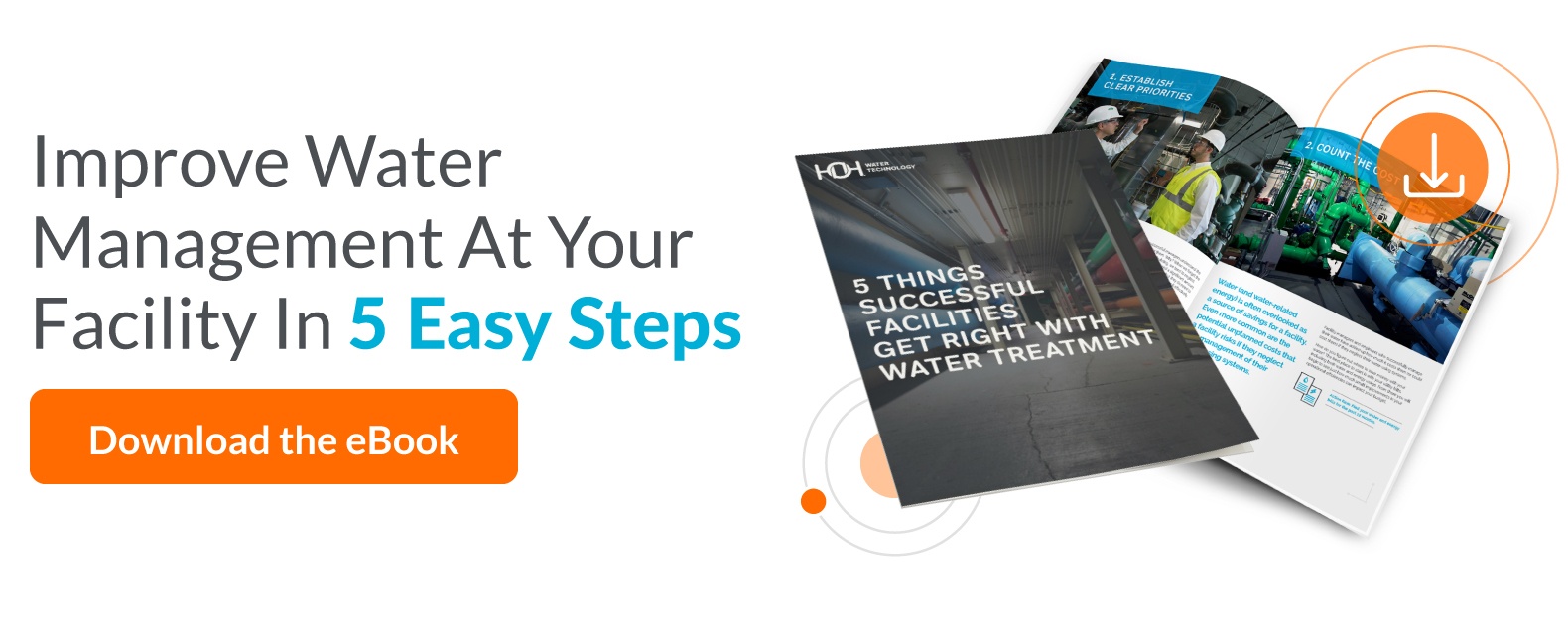

While water is our sole focus at HOH, we understand that it’s often an afterthought for our clients. Until water causes them a problem, most facility managers are not focused on water management. This reactive approach makes you more susceptible to safety violations, compliance headaches, and less likely to be operating at maximum efficiency. That’s why more facilities are considering automating their water treatment as part of their operational improvements.
While the idea of automating water management may not be new, there has been a big shift in how the automation is being done, thanks to new technology. Darius Barkauskas, Technical Director at HOH, explains:
“In the recent past, automating water treatment involved a lot of manual scribing to get usable data. The difference now is that the data is more accessible and easily digestible for facility managers. The data delivery has finally caught up and it’s a game-changer. It helps us solve problems much quicker.”
Here are three reasons more facility managers are embracing water management automation:
1. Proactive Control Through Real-Time Data
The old saying ‘you can’t manage what you don’t measure’ is true for water as well. In an old-school water management model, a service engineer might go on-site once a month. If things are operating smoothly while he’s there, he assumes everything is great. But what he doesn’t see are the 30 days between now and his last visit. How consistent was the control during that period? Were there chemistry or equipment issues that went unresolved for weeks? A lot can happen in 30 days. Scale can form. Biofilm can grow. Metal can corrode. Any of these can escape detection in a routine service call.
As Barkaukas says: “In that amount of time, things could have gone off the rails and you didn’t even know it.”
A better approach is using the data from your automation platform to get daily data feeds that allow you to see a problem before it starts. A lot of problems that occur with water are found after the fact and then you’re left to piece together information and play detective. Real-time data can show you trends of activity that allow you to be proactive instead. The data can also be used to quickly troubleshoot the source of the problem and develop a solution.
2. Operational Efficiency & Equipment Preservation
No matter what type of facility you manage during your career, you’ll be asked to improve operational efficiencies, lower utility costs, and preserve your equipment for as long as possible. Automation helps you achieve all three of these things.
When you have ‘real numbers’ to work with, you can stop guessing and start making smarter decisions about how to lower costs, including managing your chemicals.
Barkauskas points out:
“You might only operate your cooling systems six months out of the year. In those six months, you might only be checking your systems every 30 days. That means you have only six chances to optimize your efficiencies. But with automation, you can look at it daily and make necessary adjustments.”
The efficiencies realized through automation will also help you extend the life of your equipment, which can save you tens of thousands of dollars over time.
3. Water Safety Compliance & Pathogen Control
As requirements for water safety continue to become more stringent, it is even more critical for your water systems to be in compliance with industry standards. Many facility managers struggle with compliance issues because it’s very difficult to ‘show’ that you’re in compliance. Automated control of your water systems can help you do this, mitigating some of the risks involved with wastewater and other types of water management practices:
Barkauskas explains: “Imagine you’re in a situation like one of our clients recently. They were discharging their wastewater appropriately, but the city came in and told them they were non-compliant with local regulations. We pulled up their water management data and were able to prove the city wrong.”
Legionella management is another hot button topic for compliance and water safety. Some states are taking an aggressive stance on water safety requirements due to recent outbreaks of Legionellosis. New York City instituted sweeping changes after a significant Legionella outbreak claimed several lives in 2015.
The changes included extra fines for all parties liable for an outbreak, including building owners and their water management vendors. The bottom line is that there will be more legislation, and everyone involved will be held accountable. We expect to see what’s happening in New York happen elsewhere soon.
Automating Water Management Will Not Replace People
As with automation in other industries, such as manufacturing, there’s always speculation about automation replacing people. In the case of water management, that’s unlikely. Capturing data is one thing, making thoughtful decisions about the best solutions is another, especially in an emergency such as a Legionella outbreak. That job will likely always be done by a human, hopefully, one with experience and good judgment.
We recommend making it very clear which people are responsible for each part of your water management. It’s too important for you to have a ‘pass the buck’ mentality. You can start by creating a water safety team at your facility using this template.
Get clear about who’s doing what, what to do in an emergency, and how much of your water management will be outsourced to an experienced partner. This provides protection for everyone in the event of an emergency.
As remote control and data visibility become more accessible for more facilities, we’ll continue to see greater adoption of water automation practices. It just makes good operational sense. And this will provide more opportunities for building managers to maximize their assets, increase their visibility into water usage, and maintain overall compliance for their operations.
Barkauskas sees this as a positive trend: “This is the next level of leveraging big data and software solutions to really understand your water consumption, quality, and efficiency. It means we’re making great progress toward proactive water management and better water treatment control.”
It’s also a step in the right direction for something very important to us at HOH: ending the global water crisis by 2030. With a finite amount of freshwater on the planet, this resource will continue to become more precious and more scarce for more and more people. Embracing technology and best practices that help us better manage our water consumption, or at least better understand it, is something we can do right now to make an impact.
Recent Blog Posts

Five Ways to Increase the Efficiency of Your Closed Loop System

Global 6K for Water



